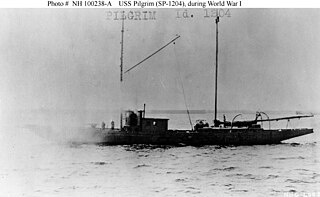The Stone Fleet consisted of a fleet of aging ships purchased in New Bedford and other New England ports, loaded with stone, and sailed south during the American Civil War by the Union Navy for use as blockships. They were to be deliberately sunk at the entrance of Charleston Harbor, South Carolina in the hope of obstructing blockade runners, then supplying Confederate interests. Although some sank along the way and others were sunk near Tybee Island, Georgia, to serve as breakwaters, wharves for the landing of Union troops, the majority were divided into two lesser fleets. One fleet was sunk to block the south channel off Morris Island, and the other to block the north channel near Rattlesnake Shoals off the present day Isle of Palms in what proved to be failed efforts to block access the main shipping channels into Charleston Harbor.
Waban (c.1604—c.1685) was a Native American of the Nipmuc group and was thought to be the first Native American convert to Christianity in Massachusetts.

USS Ulysses (ARB-9) was planned as a United States Navy LST-542-class tank landing ship, but was redesignated as one of twelve Aristaeus-class battle damage repair ships built for the United States Navy during World War II. Named for Ulysses, she was the second US Naval vessel to bear the name.
Corson Inlet is a narrow strait on the southern coast of New Jersey in the United States.
Burtons Bay, formerly named Floyds Bay, is a bay on the coast of Virginia in the United States.
San Carlos Bay is a bay located southwest of Fort Myers, Florida, at the mouth of the Caloosahatchee River. It connects to Pine Island Sound to the west and to Matlacha Pass to the north. The bay contains Bunche Beach Preserve, a 718-acre conservation area acquired by Lee County, Florida in 2001. This part of San Carlos Bay includes tidal wetlands area that includes beach, mangrove forests and salt water "flats" popular with wildlife enthusiasts, paddlers and fishermen.

USS Lynx II (SP-730), later USS SP-730, was an armed motorboat that served in the United States Navy as a patrol vessel and harbor dispatch boat from 1917 to 1919.

USS Mundelta (ID-1301) was a cargo ship that served in the United States Navy from 1918 to 1919.

USS Bobylu (SP-1513) was a motorboat that served in the United States Navy as a patrol vessel from 1917 to 1918.

USS William M. Hobby (APD-95), ex-DE-236, was a United States Navy high-speed transport in commission from 1945 to 1946.

USS Kline (APD-120) was a Crosley-class high-speed transport in commission with the United States Navy from 1944 to 1947. She was transferred to the Republic of China Navy in 1966 and served as ROCS Shou Shan (PF-37/PF-893/PF-837) until 1997. She was finally sunk as a target in 2000.

USS Yokes (APD-69), ex-DE-668, was a United States Navy high-speed transport in commission from 1944 to 1946.

USS Foam (ID-2496) was a United States Navy trawler which served as a minesweeper and was in commission from 1918 to 1919.

USS Politesse (SP-662) was a motorboat that served in the United States Navy as a patrol vessel from 1917 to 1919.

USS Charles Mann (SP-522), was a United States Navy tug and patrol vessel in commission from 1917 to 1919.

The second USS Bonita (SP-540) was a United States Navy patrol vessel commissioned in 1917 and sunk in 1918.

USS Shada (SP-580) was a United States Navy patrol vessel in commission from 1917 to 1918.

The third USS Pilgrim (SP-1204) was a United States Navy patrol vessel in commission from 1917 to 1919.

USS Liberty III (SP-1229), sometimes written Liberty # 3, and also referred to during her naval career as Liberty and as Pilot Boat Liberty, No. 3, was a United States Navy patrol vessel in commission from 1917 to 1919. The Liberty, was a pilot boat from 1896-1917. She was a replacement for the pilot boat D. J. Lawlor. After World War I, the Liberty returned to pilot service until 1934 when she was purchased as a yacht.

USS SC-21, until July 1920 known as USS Submarine Chaser No. 21 or USS S.C. 21, was an SC-1-class submarine chaser built for the United States Navy during World War I.















